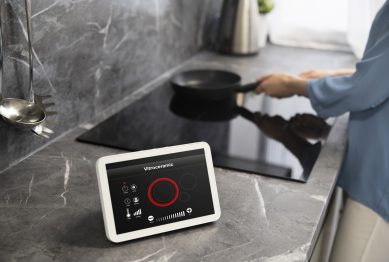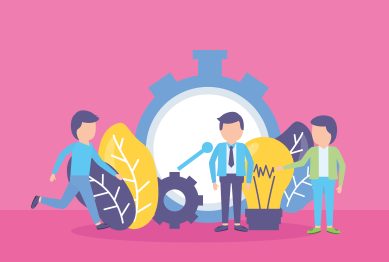In today’s digital age, we are constantly connected—our devices are filled with emails, apps, files, and notifications that keep us tethered to the virtual world. While technology has made life more convenient, it’s also led to the rise of digital clutter, which can cause stress, distraction, and a lack of mental clarity. From overflowing inboxes to disorganized files and endless notifications, the digital chaos can overwhelm even the most tech-savvy individuals.
Fortunately, the concept of digital decluttering is gaining popularity as a way to regain control over our virtual spaces and achieve a clearer, more focused mind. Decluttering your digital life isn’t just about tidying up your devices; it’s about creating a streamlined, intentional digital environment that promotes productivity, focus, and peace of mind.
In this article, we’ll explore the importance of decluttering your digital life, current trends in digital minimalism, and practical steps you can take to simplify your digital world for a fresh start.

The Importance of Digital Decluttering
Just like physical clutter, digital clutter can create a sense of overwhelm and hinder our ability to focus. According to a study by the Journal of Environmental Psychology, cluttered spaces—whether physical or digital—can lead to increased stress and decreased productivity. This is because our brains constantly process the items in our environment, whether they are in our physical surroundings or on our digital devices. When we are surrounded by digital clutter, it diverts our attention, making it difficult to focus on the tasks that matter most.
The digital clutter can manifest in various ways:
- Overflowing inboxes: Unread emails, spam, and old threads pile up and become overwhelming.
- Unorganized files and apps: Too many documents, folders, and apps on your devices create a chaotic and inefficient workspace.
- Constant notifications: Alerts from apps, social media, and emails demand your attention, preventing you from staying focused.
- Unused subscriptions and services: Whether it’s apps, memberships, or services, we often pay for digital subscriptions we rarely use, leading to unnecessary mental clutter.
Decluttering your digital life is more than just tidying up. It’s about reducing distractions, freeing up mental space, and improving productivity. When you organize your digital environment, you can better focus on your work, minimize stress, and create more room for creative thinking.
The Growing Trend of Digital Minimalism
Digital minimalism is an emerging trend that advocates for a more intentional and mindful approach to technology use. Popularized by author Cal Newport, digital minimalism encourages individuals to reassess their relationship with technology and reduce unnecessary digital noise. Instead of constantly consuming information and jumping between apps, digital minimalists focus on the tools and practices that align with their values and goals.
Newport’s book, Digital Minimalism: Choosing a Focused Life in a Noisy World, argues that by eliminating digital distractions and optimizing the technology we use, we can reclaim our time and attention, which are our most valuable resources. His approach involves identifying the tools that serve your life and eliminating the ones that don’t—such as limiting time on social media, organizing digital files, and cutting out excessive subscriptions.
The goal of digital minimalism is not to abandon technology but to use it more intentionally, with purpose and focus. This practice is becoming more popular as people recognize the mental toll of constantly being online. According to a report by Statista, over 3.8 billion people worldwide used social media in 2021, and the average person spends nearly 2.5 hours per day on social platforms. With these growing statistics, it’s no surprise that many are choosing to simplify their digital lives to avoid information overload and foster greater mental clarity.
How to Declutter Your Digital Life: Practical Steps for a Fresh Start
Decluttering your digital life may seem like an overwhelming task, but it’s easier than you think. By taking small, intentional steps, you can streamline your digital environment and create a more organized, focused space. Here’s how to get started:
1. Clean Up Your Email Inbox
One of the most common sources of digital clutter is an overstuffed email inbox. Unread messages, old threads, and unwanted subscriptions contribute to stress and make it difficult to find important messages. Here’s how to tidy up:
- Unsubscribe: Start by unsubscribing from newsletters and promotional emails you no longer read. Use tools like Unroll.Me to quickly unsubscribe from multiple email lists.
- Create Folders: Organize your emails into folders by category (e.g., work, personal, bills). This will help you find important messages quickly and reduce clutter.
- Use Filters: Set up automatic filters to sort incoming emails into relevant folders, keeping your inbox organized in real-time.
- Archive and Delete: Archive emails you want to keep but don’t need immediate access to, and delete old emails that no longer serve you.
2. Organize Your Files and Documents
When your digital files are disorganized, it can feel like you’re constantly searching for the documents you need. Streamlining your files can help you save time and reduce stress:
- Create a Folder System: Organize your files into broad categories (e.g., personal, work, finance) and subfolders for specific projects or tasks. Make sure your folder structure is simple and intuitive.
- Delete or Archive Old Files: Regularly go through your files and delete those you no longer need. Archive older documents you want to keep but don’t need immediate access to.
- Use Cloud Storage: Store your files in the cloud (e.g., Google Drive, Dropbox, OneDrive) for easy access and backup. Cloud storage helps free up space on your device while keeping files organized and accessible.
3. Minimize Digital Distractions
Constant notifications from apps, social media, and email can disrupt your flow and reduce productivity. Take control of your notifications to regain focus:
- Limit Push Notifications: Turn off non-essential push notifications from apps that aren’t crucial to your work. Set your phone to “Do Not Disturb” mode during focused work sessions.
- Use Focus Tools: Apps like Freedom, Focus@Will, and Cold Turkey can block distracting websites and apps during work hours, helping you stay focused on the task at hand.
- Set Screen Time Limits: Many smartphones and computers have built-in features that track your screen time and allow you to set daily limits for specific apps. Use these features to limit your time on non-essential apps and websites.
4. Declutter Your Digital Devices
Over time, our digital devices accumulate unused apps, files, and programs that contribute to clutter. Cleaning up your devices can improve their performance and make them more efficient:
- Delete Unused Apps: Go through your phone, tablet, and computer and delete apps you no longer use. This frees up space and reduces visual clutter.
- Clear Browser History and Cache: Regularly clear your browser history, cookies, and cache to improve your device’s performance and remove unnecessary data.
- Organize Desktop Icons: Keep your desktop clean by organizing files into folders and removing shortcuts you don’t need. A clutter-free desktop promotes a sense of calm and helps you focus.
5. Reevaluate Your Digital Subscriptions
Many people sign up for digital subscriptions—whether it’s streaming services, news outlets, or premium apps—and forget about them, leading to unnecessary expenses and digital clutter. Take the time to review and cancel subscriptions that no longer serve you:
- Audit Your Subscriptions: Review your bank or credit card statements for recurring subscriptions. Evaluate whether you’re still using those services or apps, and cancel the ones you no longer need.
- Streamline Services: Instead of having multiple subscriptions for similar services, consolidate them. For example, use one streaming service that provides the majority of the content you enjoy instead of subscribing to several.
6. Practice Digital Minimalism
Finally, embrace the principles of digital minimalism by consciously choosing the technology and digital tools that truly serve your life and work. The goal isn’t to eliminate all digital distractions, but to use them intentionally:
- Limit Social Media: Consider reducing your time on social media or unfollowing accounts that don’t add value to your life. Set specific times for checking social platforms rather than scrolling aimlessly.
- Declutter Your Digital Spaces: Regularly revisit your digital environment to ensure that it remains clean and organized. Make sure your devices, apps, and subscriptions continue to align with your values and priorities.
Conclusion
Decluttering your digital life is a powerful way to reclaim control over your time, reduce stress, and boost productivity. By organizing your devices, reducing distractions, and embracing digital minimalism, you can create a digital environment that supports your goals, promotes creativity, and fosters a sense of peace. As we continue to spend more time online, it’s essential to make intentional choices about how we engage with technology, so we can achieve a fresh start and live more purposefully in the digital age.
Reference
- Clearing Out Digital Clutter, https://newsroom.clevelandclinic.org
- 10 Steps to Declutter Your Digital Life, https://medium.com
- My Complete 10 Step Beginner’s Guide to Digital Minimalism, https://medium.com









